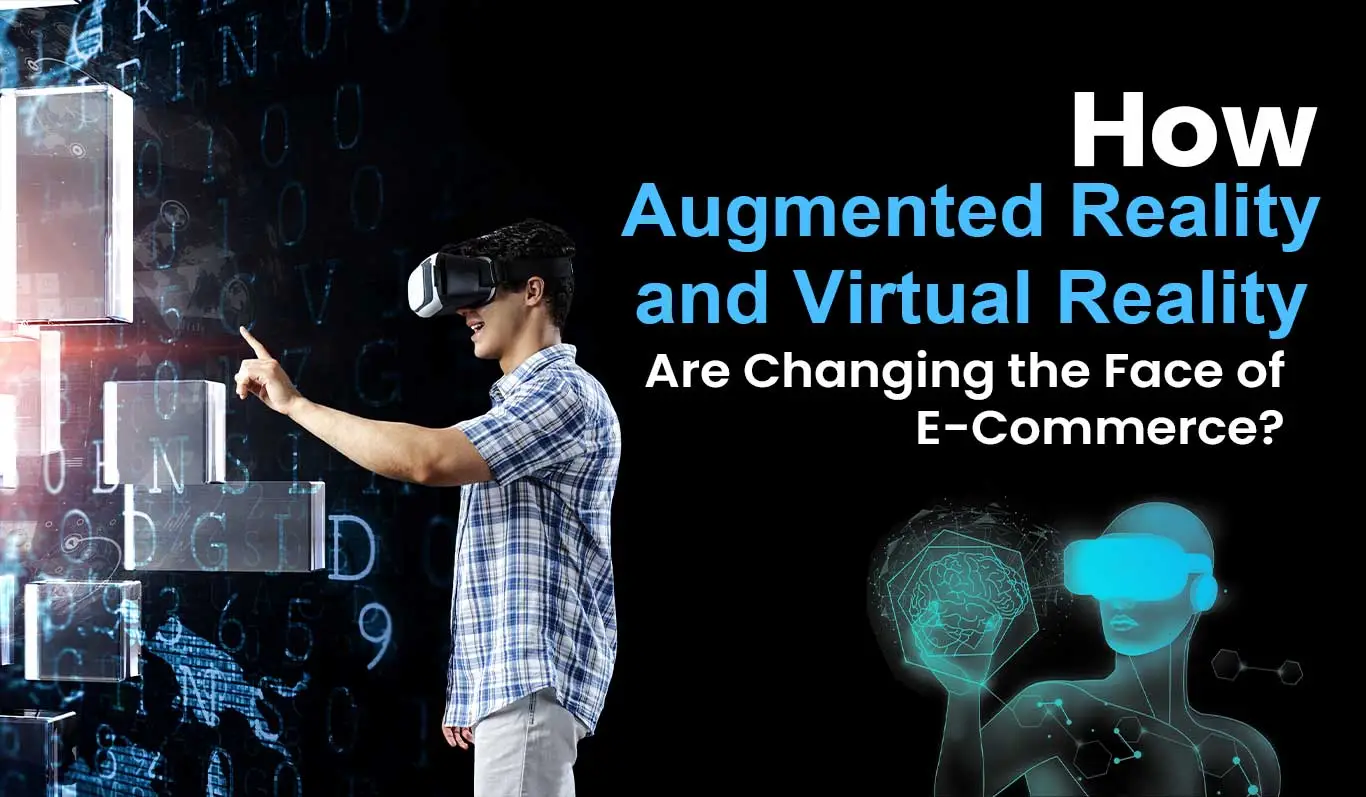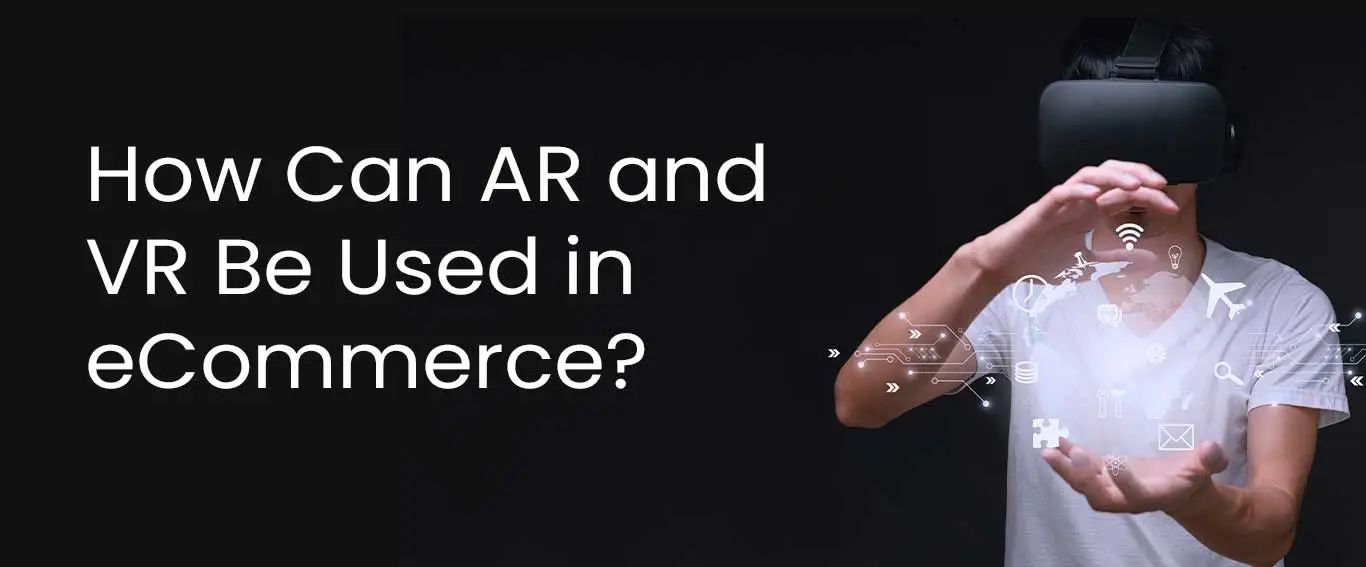How Augmented Reality and Virtual Reality Are Changing the Face of E-Commerce?

Introduction
There's been a lot of progress since the beginning of e-commerce. Since its inception, e-commerce has evolved to offer more than just the exchange of goods. Virtual Reality (VR) and Augmented Reality (AR) are just two examples of advanced technologies used in e-commerce. With these new technologies, businesses can provide an interactive, immersive shopping experience for their customers. The purpose of this article is to explore how VR/AR can be used in e-commerce, its potential impact, the challenges of implementation and how businesses can prepare.
An Overview Of Augmented Reality (AR) And Virtual Reality (VR)
AR and VR are two technologies that are revolutionizing the way we interact with digital content.
In Augmented Reality (AR), digital objects and information are superimposed over the real world. A user can experience augmented reality through smartphones, tablets, and AR glasses, which utilize cameras and sensors to detect and overlay digital content on top of the user's environment. Uses: enhancing education and training, improving navigation and wayfinding, and creating immersive marketing experiences.
By contrast, Virtual Reality (VR) provides users with a fully immersive digital environment in which they can interact. The user experience VR by wearing a headset which covers their eyes and ears and creates a simulated world that responds to their movements and actions. Uses: gaming, education and training, and therapy and rehabilitation.
Market Analysis for AR/VR in eCommerce
Retail virtual and augmented reality is projected to reach $17.86 billion by 2028, a CAGR of 24.8%. Growing availability of AR-compatible devices and increasing availability of AR-based mobile apps are driving the growth of the AR retail market. According to the latest report by Technavio, the AR/VR market is forecast to grow by USD 162.71 billion from 2020 to 2025. Growth in 2021 was estimated at 25.13 percent Y-O-Y.
How Can AR and VR Be Used in eCommerce?

Try things before you buy them with AR
AR and VR make shopping more fun by personalizing it. With AR, you can see how a product will look in your house or on you. AR can help you see how new furniture will fit in your living room or how shoes will look with your outfit. Personalization makes online shopping feel more like in-person, which makes it more enjoyable.
An in-store experience in VR
VR makes shopping even more immersive. Virtual reality lets you explore virtual storefronts and interact with products like you're there. You can browse a virtual boutique or walk through a virtual mall. VR makes online shopping feel like an adventure and creates a sense of presence.
Engage your customers with AR and VR
Keeping customers on your site is one of the biggest challenges of e-commerce. AR and VR can help solve this problem by making interactive experiences. Customers can interact with products in a fun, informative way with AR. VR lets customers explore virtual environments and interact with products in a way that's more engaging than just scrolling through a website. AR and VR can keep e-commerce customers engaged and coming back.
Get the word out
You don't have to link AR and VR to sales. According to Tom Sharman, Co-Founder of talent management and consultancy New Waves, the technology can also help build brand awareness. If Ford wanted to give people an idea of what driving a Mustang is like, it could make a VR racing game. Not only does this create buzz, but it can also increase brand awareness.
Manuals with interactive features
AR can also be used to create interactive user manuals, which are not directly related to sales. With an app, users can get a virtual tour of a product, learn how it works, and explore its features by scanning it. In addition to educating your customers about your products and improving engagement, this type of application can reduce stress on your post-sales support teams.
Benefits of AR and VR in eCommerce
In the past, shopping online meant looking through clunky product pictures and guessing whether a sweater would fit. AR and VR have made e-commerce more engaging and interactive than ever. However, what are the benefits of e-commerce using AR and VR over traditional methods?
Let's take a look:
Experiences tailored to your preferences: A physical store's layout and inventory limit traditional commerce. Customers can personalize their shopping experiences through AR and VR by visualizing how a product will look on them. The IKEA AR app, for example, lets customers visualize how their furniture will look in their homes before making a purchase.
Engage customers more effectively: Traditional commerce does not provide the same level of immersion as AR and VR. The interaction with products is similar to an in-person experience, which increases customer engagement and leads to higher conversion rates. Nike's VR experience, for example, lets customers customize and interact with virtual sneakers like never before.
Reduction in return rates: Traditional commerce faces a number of challenges, including product returns. Before they see a product in person, customers may be unsure of its fit, color, or style. AR and VR, however, allow customers to preview products before purchasing them. As a result, there are fewer returns of products and customers are more satisfied. Using Warby Parker's Augmented Reality app, customers can try on virtual glasses and see how they look.
Savings on costs: It is expensive to maintain physical stores and inventory in traditional commerce. Using AR and VR, retailers can offer more products without having to carry physical inventory. In Wayfair's AR app, for instance, customers can virtually see furniture in their home without a physical showroom.
Awareness of the brand: AR and VR can be used to build brand awareness and create buzz. These technologies can help retailers create unique experiences that set their brands apart from their competitors. You can try on virtual make-up and hairstyles with L'Oreal's AR app, which generates buzz and social shares.
Key Features of AR/VR eCommerce Apps
AR/VR ecommerce apps have several key features that make them stand out.
AR/VR visualization
A key feature of AR/VR ecommerce apps is the ability to visualize products in augmented or virtual reality. By viewing how products would look in their environment or on their bodies, customers can determine whether they are right for them.
Explore products interactively
In AR/VR ecommerce apps, customers can interact with products in new and innovative ways. The customer can zoom in on product details, change the color or material, and even customize the product.
Streamlined shopping experience
Ecommerce apps that integrate AR/VR aim to provide a seamless shopping experience. Without leaving the app, customers can browse products, add them to their cart, and check out. By using this feature, you can ensure a pleasant and efficient shopping experience.
Personalized services
An AR/VR ecommerce app may provide a customized recommendation based on a customer's browsing and purchase history. The feature facilitates the discovery of products that may interest customers and increases the likelihood of them making a purchase.
Social sharing
AR/VR ecommerce apps often integrate social sharing features that enable customers to share their product visualizations with friends and family. The feature generates buzz and interest in the product.
After-sales support
The AR/VR ecommerce app often provides a user manual, troubleshooting guide, and customer support chatbot as post-sales support. Customers can use these features to resolve any issues they may have with their purchase quickly.
What is the Cost of Implementing AR/VR in Ecommerce Applications?
A common question you may have when considering AR/VR ecommerce apps is how much they will cost. AR/VR ecommerce apps can cost a lot of money to implement, depending on a number of factors.
A simple AR ecommerce app can cost $25-40K, and it can get expensive when more complicated ideas or a larger number of 3D models are involved. Several factors must be considered when estimating the cost of your AR/VR ecommerce app and calculating its ROI.
-
A significant cost factor for AR/VR ecommerce is the type and complexity of the use case. Navigation is the least complex, but product try-on/try-outs are the most complex. Your solution's scale, such as the number of products in your catalog or the size of your shopping center, will also influence your costs.
-
It is also important to consider the type of devices targeted when determining the cost. The cost of your AR/VR ecommerce app will vary depending on whether you choose a tablet or smartphone, AR glasses, or AR mirrors. In addition, 3D model development will increase costs. Detail level and type of base material will determine the price of 3D models.
-
Your AR/VR ecommerce app will also require integration with your existing ecommerce ecosystem.
-
The cost of operations, such as cloud services, will also be considered.
AR and VR in eCommerce: The Future
The cost of implementing AR/VR ecommerce apps can vary widely, so choosing a reputable development team with AR/VR expertise is essential. You can calculate the ROI of your investment by considering the factors discussed earlier. Investing in AR/VR e-commerce apps has long-term benefits. Enhancing the customer experience could increase loyalty, revenue, and referrals. A team with experience could help ensure the app's success and minimize maintenance costs in the future.
Even though AR and VR are still in their nascent stages, there is a great deal of potential for them in e-commerce. We can expect to see more innovative uses of AR and VR in the world of online shopping as technology continues to improve.
Request a Quote
Categories
Popular posts
Best Practices for Software Product Engineering Every CTO Should Implement
2023-14-18How to Build Your Own On-Demand Carpooling App Services?
2023-08-25How to Start an On-Demand Fuel Delivery Business: A Comprehensive Guide
2023-07-28Empowering Miners: How Fleet Management Apps are Transforming the Mining Industry?
2023-07-21A Complete Guide to Develop a Food Delivery App for Restaurants in 2023
2023-07-08Mobile Apps Transforming the Travel Industry: A Game-Changer in Travel Planning and Experience
2023-07-07
